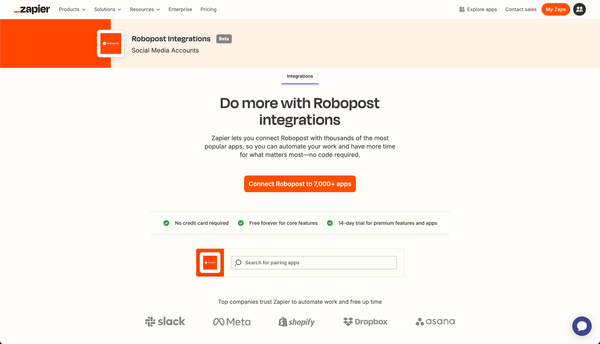The Power of Scheduling: Why Timing Matters in Social Media Marketing
Discover how strategic timing in social media marketing can boost engagement and performance with our expert tips.

Social media marketing is a dynamic and competitive space where timing can be as crucial as the content itself. The Power of Scheduling: Why Timing Matters in Social Media Marketing delves into the strategic importance of scheduling posts to enhance engagement and reach. By understanding the best times to connect with your audience and employing the right tools to automate and analyze social media activities, marketers can craft a more effective and efficient online presence.
Harnessing Scheduling and Analytics for Peak Performance

Identifying Peak Engagement Times
Understanding when your audience is most active on social media is crucial for maximizing engagement. Identifying peak engagement times allows you to tailor your posting schedule to match your audience's online habits, ensuring your content has the greatest impact.
By analyzing engagement patterns, you can pinpoint the optimal times to post on each platform. This strategic approach not only boosts visibility but also enhances the potential for audience interaction.
Here is a text table showing the best times to post on various platforms:
Platform | Best Times to Post |
|---|---|
Weekdays: 9am-3pm | |
Weekdays: 9am-11am, 1pm-3pm | |
Weekdays: 12pm-3pm | |
Weekdays: 8am-10am, 12pm-1pm |
These times are not set in stone. They serve as a starting point, and you should continuously refine your schedule based on the analytics data specific to your audience.
Automating Posts with Scheduling Tools
Automation is your ally in this process. Tools that allow for scheduling of posts are invaluable for maintaining an active presence, even when you're away from your desk. Here's a simple list to get you started:
- Unified dashboard for cross-platform oversight
- Real-time analytics to gauge post performance
- Automated scheduling to maintain a consistent presence
- Collaboration tools for team synergy and workflow optimization
By using a social media calendar, you avoid the pitfalls of sporadic posting, which can confuse your audience and diminish engagement.
Harnessing the power of scheduling and analytics is like setting the stage for a social media symphony. Your content dances to the rhythm of peak engagement times, ensuring your message hits the sweet spot every time. With tools like Robopost, you can schedule posts, freeing you up to focus on strategy rather than timing. Additionally, consider the following steps to enhance your scheduling strategy:
- Identify peak engagement times for your audience.
- Schedule posts to automatically publish during these windows.
- Use analytics to adjust and improve post timings and content.
Leveraging Analytics for Timing Optimization
In the realm of social media marketing, analytics are the compass that guides your scheduling decisions. By meticulously analyzing performance data, you can pinpoint the most effective times to post, ensuring your content reaches the maximum audience. This process involves a cycle of measuring, understanding, and refining your strategy based on actionable insights.
Analytics enable a feedback loop that transforms raw data into a strategic advantage. Regularly reviewing key metrics such as engagement rates, impressions, and conversion figures allows you to adapt your approach with precision.
Here's a simple framework to leverage analytics for timing optimization:
- Regularly check engagement and impressions to understand audience behavior.
- Monitor conversions to gauge the real impact of your posts.
- Refine your strategy based on data-driven insights, adjusting content types and posting times for optimal engagement.
By embracing this analytical approach, you can craft a social media presence that not only resonates with your audience but also drives tangible business results.
Crafting an Effective Social Media Calendar

The Importance of Consistent Posting Schedules
Maintaining a consistent posting schedule is crucial for keeping your audience engaged and building a reliable brand presence on social media. It's not just about posting regularly; it's about creating a rhythm that your followers can anticipate and rely on.
- Identify peak engagement times for your audience.
- Schedule posts to automatically publish during these windows.
- Use analytics to adjust and improve post timings and content.
A consistent schedule ensures that your content reaches your audience when they are most likely to be active, fostering a sense of anticipation and trust.
For small businesses or those with limited resources, starting with manageable goals, such as one post per day or 3-4 posts a week, can establish a foundation for growth. As your capacity increases, so can your posting frequency, always guided by the data and the engagement patterns of your audience.
Aligning Content with Key Events and Holidays
Aligning your social media content with key events and holidays can significantly boost engagement and relevance. Not every platform will suit every holiday, so it's crucial to select those where your audience is most active. Here are some steps to ensure your content resonates with the right moments:
- Research and mark important dates related to your industry or audience interests.
- Plan content themes around these dates well in advance.
- Tailor your message to the platform and the specific holiday or event.
By strategically scheduling content, you can create a sense of anticipation and relevance that captivates your audience. A well-organized social media calendar is not just about what you post, but also when you post. It's the backbone of a strategy that resonates with your audience and amplifies your online presence.
Utilizing Management Tools for Strategic Planning
In the realm of social media marketing, strategic planning is not just about crafting messages; it's about delivering them at the right time to maximize impact. Social media management tools are indispensable for this purpose. They offer a suite of features that cater to various aspects of a marketer's workflow, from scheduling posts to analyzing performance metrics.
These tools not only streamline the scheduling process but also provide valuable insights that can inform future strategies. By utilizing these platforms, businesses can maintain a consistent online presence without having to manually oversee every post.
Embrace the power of social media automation tools. They provide a 360-degree view of your social pages, helping you to protect your brand and measure the true impact of your online activities.
The right tool can transform a haphazard approach into a finely-tuned strategy. It's about finding the one that aligns with your business's needs and budget, ensuring that every post is an opportunity to engage and grow your audience.
Streamlining Social Media Strategy with Calendar Management

Planning for Precision Execution
In the realm of social media marketing, planning for precision execution is crucial for success. A well-structured content calendar acts as a roadmap, guiding your posts to align with both audience availability and business objectives.
It's not just about being everywhere; it's about being where it counts. Use analytics tools to track conversions and web traffic, and let the data drive your sales strategy. This targeted approach will help you maximize impact without stretching your resources too thin.
Maintaining Consistency Across Platforms
Maintaining a consistent brand voice and messaging across various platforms is crucial for building trust and recognition with your audience. While each social media platform has its unique environment and audience expectations, the core message of your brand should be unwavering.
To achieve this, consider the following steps:
- Establish a unified brand voice and visual style guide.
- Use a centralized dashboard to monitor all social media activity.
- Schedule posts in advance to ensure regularity and timely content delivery.
- Adapt your content to fit the context of each platform while maintaining the overall message.
Prioritizing consistency over frequency can foster deeper engagement. If you find yourself overwhelmed with the need to post constantly, take a step back. Focus on being consistently reliable with quality content, as this approach is more likely to build a loyal following.
Optimizing Marketing Efforts with Organizational Tools
In the realm of social media marketing, organizational tools are indispensable for optimizing marketing efforts. These tools provide a structured approach to managing a brand's online presence, ensuring that every post is part of a strategic plan. By using tools like Robopost, marketers can schedule posts, monitor engagement, and analyze data, which are crucial for making informed decisions.
Proactive digital engagement is essential for a dynamic online presence. Organizational tools offer features such as unified customer experience management (Unified-CXM), analytics for tracking conversions and web traffic, and scheduling to maintain a consistent posting rhythm. These features not only save time but also enhance the connection with the audience.
By embracing modern tools, businesses can upload social media posts in bulk and schedule them to go out automatically, aligning with peak engagement times and ensuring a strategic and impactful social media presence.
Building a Solid Social Media Foundation

Determining Optimal Posting Frequency
Finding the sweet spot for how often to post on social media is crucial for engagement without overwhelming your audience. Consistency is key, but the right frequency can vary depending on the platform and your specific audience. For small businesses or those with limited resources, starting with a manageable schedule is essential. Aim for a frequency that maintains your brand's presence without causing burnout.
Experimentation is necessary to tailor your strategy to your audience's preferences. Here's a general guideline for posting frequency on various platforms:
- Facebook: 1-2 posts per day
- Instagram: 1-2 posts per day
- Twitter: 3-5 tweets per day
- LinkedIn: 1 post per day
Remember, these are starting points. Monitor engagement and adjust accordingly.
A strategic approach to posting frequency involves aligning your content with your audience's online habits while ensuring your team can sustain the pace. It's about finding a balance that works for both your audience and your business operations.
Adapting Schedules for Resource-Limited Businesses
For businesses with limited resources, the key to effective social media marketing lies in smart scheduling. Adapting your posting schedule to your resources can maximize impact while minimizing effort.
- Prioritize content creation for peak times identified through analytics.
- Focus on quality over quantity, ensuring each post delivers value.
- Utilize scheduling tools to maintain a presence even when resources are stretched thin.
By concentrating on strategic times and automating the process, resource-limited businesses can still compete effectively in the crowded social media landscape.
It's not about having the most posts; it's about having the right posts at the right times. This approach allows for a sustainable social media strategy that aligns with business capabilities and audience expectations.
Starting with Manageable Posting Goals
Embarking on a social media marketing journey can be overwhelming, especially when considering the frequency and quality of posts required to engage an audience effectively. Starting with manageable goals is crucial to avoid burnout and maintain a sustainable strategy. It's essential to set realistic social media goals that are personalized and aligned with your broader business objectives, rather than adopting generic targets.
- Repurpose strategically: Transform a single piece of content into multiple formats to maximize reach and efficiency.
- Utilize templates: Employ caption templates and story structures to streamline content creation and maintain consistency.
- Explore scheduling tools: Evaluate both free and paid options to find tools that suit your needs, keeping in mind their various advantages and limitations.
Remember, what gets measured gets managed. Continuously refine your strategy using insights from your efforts to make every post count.
By setting achievable targets, such as gaining a specific number of followers within a set timeframe, you create a focused path forward. This approach ensures that your social media efforts are not only measurable but also strategically aligned with your marketing goals, ultimately leading to better engagement and growth.
Summary
- Identifying and targeting peak engagement times can significantly increase the visibility and interaction with your social media content.
- Automating social media posts using scheduling tools like Robopost helps maintain a consistent online presence, even during off-hours.
- Utilizing analytics is key to optimizing post timing and content, leading to improved performance and engagement over time.
- A well-planned social media calendar aligns your content strategy with key events and holidays, ensuring relevancy and consistency.
- Streamlining social media strategy with calendar management and organizational tools enhances team collaboration and maximizes marketing efforts.
